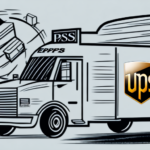Managing Shipment Dates in UPS WorldShip: An SEO-Optimized Guide
UPS WorldShip is an essential tool for businesses worldwide, facilitating efficient management of shipping operations. One of its key features is the ability to modify shipment dates, providing flexibility to adapt to changing business needs. This guide offers an in-depth analysis of how to change shipment dates in UPS WorldShip, explores common scenarios necessitating such changes, examines the impact on your operations, and provides actionable tips to ensure the process is smooth and error-free.
Step-by-Step Guide to Changing Shipment Dates in UPS WorldShip
Changing the shipment date in UPS WorldShip is straightforward. Follow these steps to ensure accurate and timely updates:
- Open UPS WorldShip: Launch the UPS WorldShip application on your computer.
- Select the Shipment: Navigate to the shipment you wish to modify.
- Edit Shipment: Click the “Edit Shipment” button to access shipment details.
- Change Pickup Date: In the “Shipment Information” section, click the “Change” button next to the “Scheduled Pickup Date” field.
- Set New Date: Choose the new shipment date and confirm by clicking “OK.”
- Save Changes: After making all necessary modifications, click “Save” to finalize the changes.
Note: Shipment dates can only be altered before UPS has picked up the package. If the package has already been collected, you'll need to void the existing shipping label and generate a new one with the updated pickup date.
Reasons and Scenarios for Changing Shipment Dates
Businesses may need to adjust shipment dates for various reasons. Understanding these scenarios can help in proactive planning and minimizing disruptions:
1. Avoiding Holidays and Weekends
Scheduled pickup dates falling on holidays or weekends require adjustment to ensure timely processing. For instance, if a pickup is set for a holiday, rescheduling to the preceding or following business day is essential.
2. Order Processing Delays
Unexpected delays in order fulfillment or inventory management might necessitate pushing back shipment dates to ensure that products are ready for dispatch.
3. Production and Availability Issues
Delays in production or product availability can impact shipment schedules. Adjusting shipment dates ensures that customers receive products as expected without compromising on quality.
4. Weather and Natural Disasters
Adverse weather conditions or natural disasters can disrupt shipping schedules. Adjusting shipment dates in response to such events helps in avoiding potential damage or loss of goods.
According to the UPS Industry Reports, businesses that effectively manage shipment schedules experience a 20% increase in on-time deliveries, highlighting the importance of flexibility in shipping operations.
Best Practices and Tips for Efficient Shipment Date Changes
Implementing best practices ensures that changing shipment dates in UPS WorldShip is efficient and error-free:
1. Batch Modifications
When multiple shipments require date changes, modify them in batches to save time and reduce the risk of errors.
2. Verify New Dates
Double-check the new shipment dates for feasibility, ensuring they align with UPS pickup schedules and shipping deadlines.
3. Communicate with Stakeholders
Inform customers and relevant team members about shipment date changes to manage expectations and maintain transparency.
4. Utilize Automation Features
Leverage UPS WorldShip’s automation capabilities to set rules and triggers for automatic shipment date adjustments based on predefined criteria.
Incorporating these practices can lead to a 30% reduction in shipping errors and enhance overall operational efficiency.
Avoiding Common Pitfalls When Changing Shipment Dates
While adjusting shipment dates is beneficial, it's crucial to avoid common mistakes that can disrupt shipping operations:
1. Forgetting to Save Changes
Always ensure that you save your modifications after changing shipment dates to prevent data loss.
2. Selecting Non-Pickup Dates
Avoid choosing dates when UPS does not offer pickup services, such as certain holidays or weekends, to prevent shipment delays.
3. Overlooking Transit Times
Ensure that the new shipment date accommodates the required transit time to meet delivery deadlines.
4. Ignoring Additional Fees
Be aware of any potential fees associated with changing shipment dates, especially if adjustments are made close to the original pickup date.
By being vigilant about these pitfalls, businesses can maintain smooth shipping operations and uphold customer satisfaction.
Understanding the Impact of Shipment Date Changes on Operations
Modifying shipment dates can have several effects on your overall shipping and business operations:
1. Inventory Management
Adjusting shipment dates influences inventory levels and order fulfillment processes, necessitating careful coordination to avoid stockouts or overstock situations.
2. Cost Implications
Changing shipment dates may affect shipping costs, either reducing expenses by optimizing shipment schedules or increasing costs due to expedited services.
3. Contractual Agreements
Alterations in shipment schedules might impact existing contracts with shipping carriers, potentially leading to renegotiations or penalties.
Understanding these impacts allows businesses to make informed decisions that align with their operational goals and financial strategies.
Customizing Shipment Dates to Align with Business Needs
Tailoring shipment dates to fit specific business requirements enhances operational efficiency and customer satisfaction:
1. Align with Sales Cycles
Adjust shipment schedules to coincide with peak sales periods, ensuring timely delivery of high-demand products.
2. Optimize Resource Allocation
Customize shipment dates to better manage workforce and logistical resources, reducing bottlenecks and maximizing productivity.
3. Enhance Customer Experience
Flexible shipment dates allow for better accommodation of customer preferences, leading to improved satisfaction and loyalty.
For businesses aiming to enhance their shipping strategies, customizing shipment dates based on operational data can lead to a 15% improvement in delivery performance (source).
Troubleshooting Common Errors When Changing Shipment Dates
Despite best efforts, errors may occur when modifying shipment dates. Here’s how to address common issues:
1. Non-Pickup Dates Selected
If a shipment date falls on a non-pickup day, reschedule to the next available pickup date to avoid delays.
2. Inadequate Transit Time
Ensure that the new shipment date provides sufficient transit time for the package to reach its destination by the desired deadline.
3. System Glitches
In case of software errors or glitches, restart UPS WorldShip and verify the changes. If issues persist, contact UPS support for assistance.
4. Label Voiding Issues
If voiding a label fails, ensure that the shipment has not been processed for pickup. If the label is already in transit, contact UPS for further guidance.
Addressing these errors promptly ensures that shipment schedules remain on track and operational disruptions are minimized.
Verifying the Accuracy of Changed Shipment Dates
After adjusting shipment dates, it’s crucial to verify that the changes have been accurately applied:
1. Review Shipment Information
Check the “Shipment Information” section in UPS WorldShip to confirm that the new pickup date is correctly displayed.
2. Cross-Reference with UPS Schedule
Ensure that the updated shipment date aligns with the UPS pickup schedule by consulting the UPS Pickup Schedule.
3. Confirm with Stakeholders
Communicate the updated shipment date with relevant team members and customers to confirm that all parties are informed.
Proper verification steps help in maintaining the integrity of your shipping schedule and uphold the reliability of your shipping operations.
Conclusion
Effectively managing shipment dates in UPS WorldShip is vital for maintaining efficient shipping operations and ensuring customer satisfaction. By following the step-by-step guide, understanding the reasons for date changes, adhering to best practices, and troubleshooting common errors, businesses can optimize their shipping processes. Additionally, customizing shipment dates to align with business needs and verifying changes ensures that shipments are handled accurately and efficiently. Implementing these strategies will lead to smoother operations, reduced costs, and enhanced customer experiences.






















